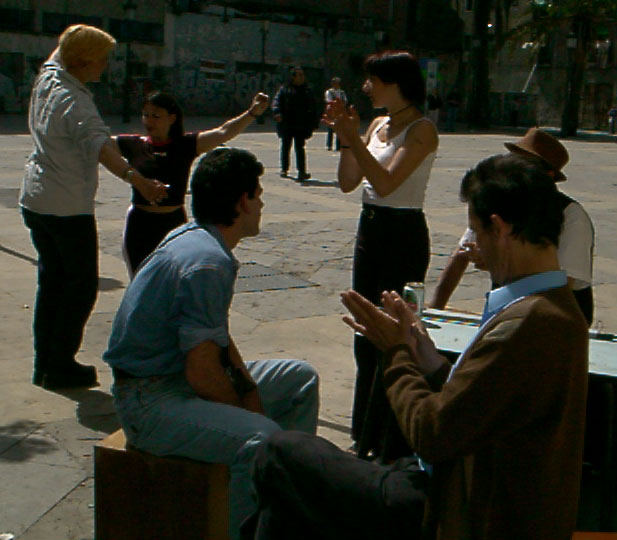 |
Rumba Flamenca
The Muqaddama of Ibu Khaldun,( 1300 c.e)speaks of the origins of Gipsies as being nomadic arab camel traders,centered on The Nabataeans city of Petra,situated in now modern Jordan.From 400 b.c. to 200 c.e. the city was at the centre of the trade routes linking Asia to the Mediteranean.Occupied by the Romans in 106 c.e. , the nomads started trading all kind of ware and made their way to Rome and beyond.
Other sources contend that it was the occupation of India by Alexander the Great in 326 b.c. that promted these nomads migration to Europe and eventually to the Iberian Peninsula by the Moorish invasion of 711-718 c.e.
Flamenco has, since the early 19th. century,been appreciated by Spanish people as a unique art form.With the increase of road and sea travel by the begining of the 20th century ,many foreign visitors to Sevilla,Cadiz and other Andalucian towns also became aware of this phenomena.By the 1920's Cante Hondo (deep song) had established itself as part of the amazing richness of the spanish musical tableau and many Gipsies found fame and fortune.Perhaps the best known Flamenco guitarist of recent times is Paco de Lucia,himself not a gipsy , but undoubtedly a genius of the genre.The Gipsy Kings,french gipsies,have since the early 1980s, given Rumba Gitana to the world and the knock on effect has popularised not only spanish but also the latin music of Mexico and South America
The popularity of Rumba is derived not only from its fiery uptempo beat but also from its simple 4/4 time signature which makes it very easy for everyone to dance to.
 |